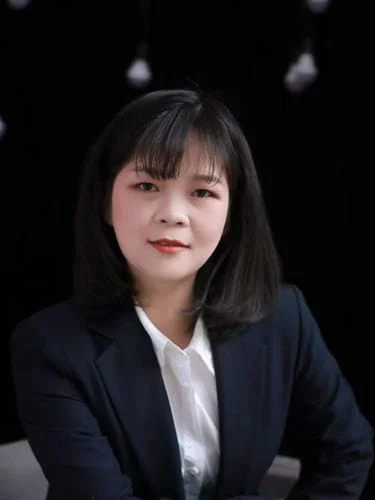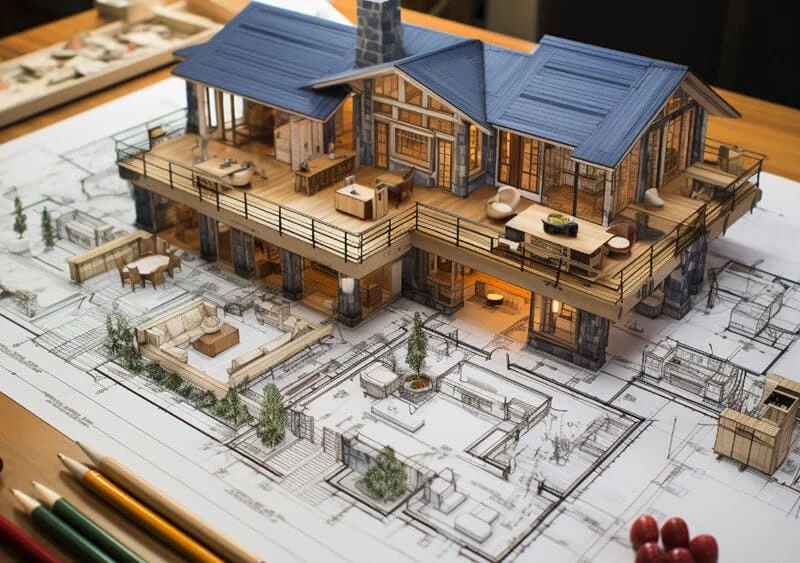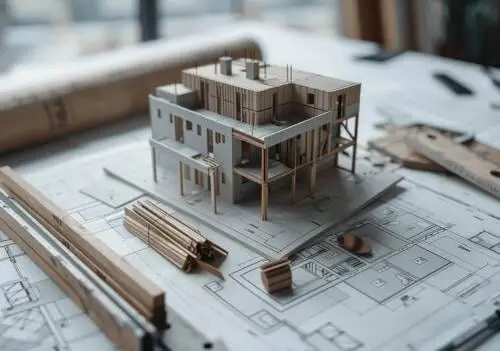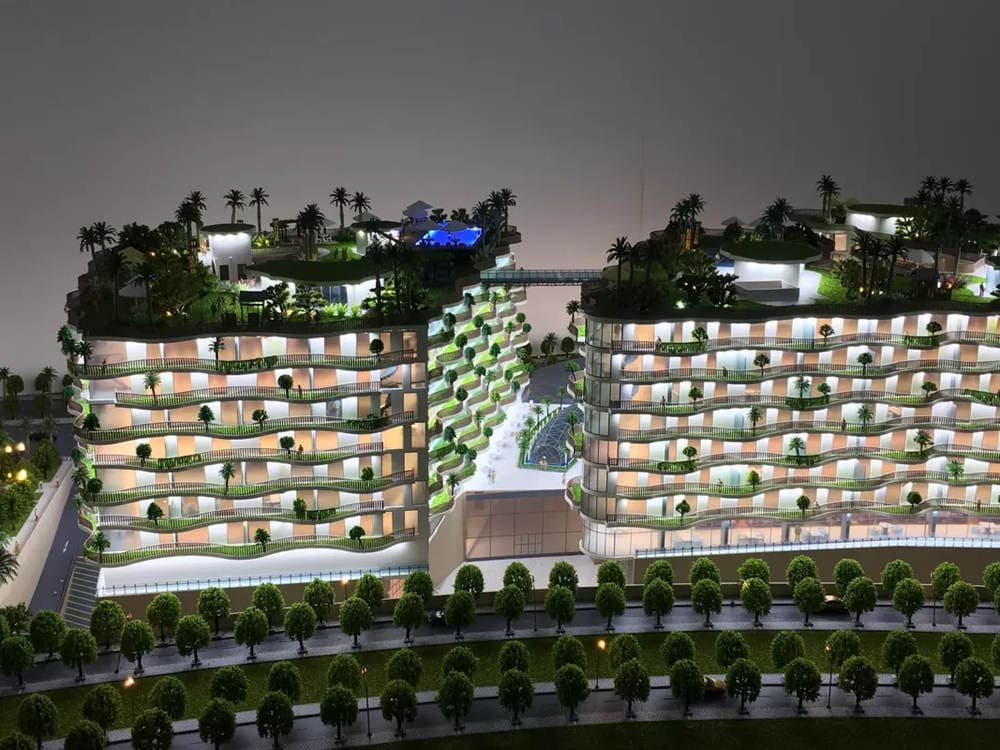마천루의 햇볕에 쬐인 로비를 걷는 것을 상상해보십시오, 꿈의 집의 레이아웃을 탐험합니다, 또는 새로운 도시 지구를 솟아 올라 - 단 하나의 벽돌이 놓기 전에. 이것은 공상 과학이 아닙니다; 3D 아키텍처 애니메이션의 힘입니다. 너무 오랫동안, 건축 및 부동산 산업은 평평한, 가장 중요한 요소를 우연히 남겨 두는 2 차원 청사진 및 정적 이미지: 고객의 상상력. 이러한 전통적인 방법은 종종 진정한 규모를 전달하지 못합니다., 느끼다, 디자인의 정서적 영향, 오해로 이어집니다, 비용이 많이 드는 수정, 그리고 기회를 놓쳤다.
건축 애니메이션은이 차이를 연결합니다. 기술 계획을 몰입 형로 변환합니다, 동적, 그리고 보편적으로 시각적 인 이야기를 이해했습니다. 공간을 경험할 수있는 도구입니다., 그것을 보지 마십시오.
이 가이드는이 혁신적인 기술을 이해하기위한 완벽한 자원입니다.. 우리는 연습과 플라이 스루 사이의 기본적인 차이점에서 생산 공정의 복잡한 세부 사항에 이르기까지 모든 것을 탐구 할 것입니다., 가격 구조, 건축 시각화의 흥미로운 미래. 당신이 비전을 정제하는 건축가인지 여부, 투자자에게 투자하는 개발자, 청중을 포착하는 마케팅 담당자, 또는 인생을 바꾸는 결정을 내리는 고객, 이 기사는 비교할 수없는 성공을 위해 건축 애니메이션을 활용할 수있는 지식을 제공합니다..
목차
기초 – 정확히 3D 아키텍처 애니메이션은 무엇입니까??
3D 아키텍처 애니메이션이란 무엇입니까??
그 핵심, 3D 아키텍처 애니메이션은 짧은, 건축 디자인을 전시하는 컴퓨터 제작 영화. 아직 존재하지 않는 건물에 대한 영화로 생각하십시오.. 정적 3D 렌더와 달리, 단일입니다, 제 시간에 얼어 붙은 사진 이미지, 애니메이션은 수백 또는 수천 개의 이미지로 구성되어 있습니다.. 이것은 유체를 만듭니다, 공간을 통해 또는 주변의 움직임을 시뮬레이션하는 비디오와 같은 경험. 애니메이션의 마법은 시간과 움직임을 사용하는 데 있습니다.. 레이아웃의 흐름을 전달할 수 있습니다., 햇빛이 하루 종일 방을 가로 질러 움직이는 방식, 그리고 단일 이미지가 결코 할 수없는 방식으로 프로젝트의 전반적인 분위기. CAD의 기술 데이터에 생명을 불어 넣습니다 (컴퓨터 보조 디자인) 그리고 bim (건축 정보 모델링) 파일, 라인과 숫자를 누구나 연결할 수있는 경험으로 전환. 이 강력한 예술과 기술 조합은 세 가지 주요 목적을 제공합니다.: 깊은 시각화, 명확한 의사 소통, 그리고 매력적인 마케팅.건축 애니메이션 vs. 정적 렌더링: 차이점은 무엇입니까??
신규 이민자들에게 가장 일반적인 혼란은 정적 렌더와 본격적인 애니메이션의 차이를 이해하는 것입니다.. 둘 다 동일한 3D 모델에서 유래합니다, 그들의 목적과 영향은 크게 다릅니다.정적 렌더는 스냅 샷입니다; 애니메이션은 전체 사진 앨범입니다., 처음부터 끝까지 완전한 이야기를합니다.주요 차이점은입니다 운동. 정적 렌더는 단일입니다, 하나의 특정 관점에서 생성 된 고품질 이미지, 전문 사진과 매우 흡사합니다. 애니메이션, 반면에, 계획된 경로를 따라 시청자를 안내하는 비디오입니다., 여러 곳에서 프로젝트를 보여줍니다, 움직이는 관점. 자동차 사진을보고 가상 테스트 드라이브를 위해 섭취하는 것의 차이입니다.. 다음은 주요 차이점에 대한 간단한 고장입니다:
| 특징 | 정적 3D 렌더링 | 3D 건축 애니메이션 |
|---|---|---|
| 체재 | 단일 이미지 (예를 들어, JPEG, PNG) | 비디오 파일 (예를 들어, MP4, 움직임) |
| 시청자 경험 | 수동적인, 관찰, 집중 | 몰입 형, 동적, 경험적 |
| 정보가 전달되었습니다 | 미학, 재료, 한 각도에서 조명 | 공간 흐름, 완전한 레이아웃, 규모, 문맥, 그리고 이야기 |
| 일반적인 사용 | 브로셔, 웹 사이트 이미지, 디자인 분위기 보드, 인쇄 광고 | 마케팅 캠페인, 투자자 피치, 가상 투어, 소셜 미디어 |
| 복잡성 & 비용 | 낮추다 | 상당히 높습니다 |
3D 연습 대. 3D 플라이 스루: 일반적인 혼란을 풀어줍니다
용어 “연습” 그리고 “플라이 스루” 종종 상호 교환 적으로 사용됩니다, 그러나 그들은 다른 목표를 달성하는 두 가지 뚜렷한 기술을 묘사합니다.. 이 차이를 이해하는 것은 프로젝트에 적합한 유형의 애니메이션을 선택하는 데 중요합니다.. 간단히 말해서, 3D 연습은 현실적인 눈 수준에서 건물의 내부를 걷는 경험을 시뮬레이션합니다., 세부 사항에 중점을 둡니다, 재료, 그리고 분위기. 대조적으로, 3D 플라이 스루 (또는 비행) 역학을 제공합니다, 건물의 외부 및 주변 환경의 공중보기, 대규모 규모와 맥락을 강조합니다.3D 연습: 내부의 개인적인 여행
- 관점: 근거와 개인. 카메라는 자연스럽게 인간의 높이로 움직입니다, 사람이 물리적으로 공간을 통과하는 방법을 시뮬레이션.
- 집중하다: 내부에 관한 것입니다. 연습은 룸 레이아웃을 보여 주도록 설계되었습니다, 가구 배치, 장식 선택, 재료 마감, 그리고 공간 내의 빛의 상호 작용. 목표는 내부의 느낌과 기능을 전달하는 것입니다..
- 목표: 감정적 인 연결을 구축합니다. 개인적인 관점에서 공간을 보여줌으로써, 연습은 고객을 돕습니다, 세입자, 또는 주택 구매자는 그곳에서 살거나 일하는 것을 시각화합니다. 질문에 대답합니다, “이 방에있는 느낌이 어떻습니까??”
- 이상적입니다: 주거용 주택 및 아파트, 사무실 레이아웃, 호텔과 레스토랑 인테리어, 인테리어 경험이 가장 중요한 소매 공간.
3D 플라이 스루: 영화 개요
- 관점: 공중 및 광대 한. 카메라는 속성 위와 주변에서 솟아납니다, 새 나 드론처럼, 제공 a “큰 그림” 보다.
- 집중하다: 외부와 그 맥락. 플라이 스루는 건물의 건축 양식을 강조합니다, 주변 풍경과의 관계, 이웃 구조, 도로, 그리고 다른 환경 요소.
- 목표: 큰 규모로 감동하고 알리기 위해. 플라이 스루는 극적인 것을 만듭니다, 프로젝트의 전체 범위와 영향을 보여주는 영화 개요. 질문에 대답합니다, “이 프로젝트는 주변 세계에 어떻게 맞습니까??”
- 이상적입니다: 대규모 개발, 고층 건물, 도시 계획 프로젝트, 기본 계획, 외부 디자인과 위치가 주요 판매 지점 인 상업용 단지.
그만큼 “왜” – 주요 이점과 전략적 응용 프로그램
건축 애니메이션은 아름다운 비디오를 만드는 것이 아닙니다; 전체 프로젝트 라이프 사이클에서 실질적인 수익을 제공하는 전략 도구입니다.. 자금 확보부터 판매 가속화까지, 이점은 광대하고 변형 적입니다.3D 애니메이션은 프로젝트 시각화 및 커뮤니케이션을 어떻게 향상시킵니다?
3D 애니메이션의 가장 큰 장점은 제공하는 능력입니다. 비교할 수없는 명확성. 추상이 필요합니다, 기술 2D는 계획을 세우고 현실적으로 바꿉니다, 누구나 이해하기 쉬운 움직이는 그림. 이것은 프로젝트에 관련된 모든 사람 사이의 커뮤니케이션 장벽을 무너 뜨리는 보편적 인 시각 언어를 만듭니다..- 고객을 위해 & 주택 구매자: 대부분의 사람들은 건축 청사진을 읽도록 훈련받지 않았습니다. 애니메이션을 통해 복잡한 공간 관계를 완전히 파악할 수 있습니다., 방의 규모를 이해하십시오, 기술 전문 지식이 필요하지 않고 디자인 의도를 확인하십시오.. 혼란을 자신감으로 대체합니다.
- 프로젝트 이해 관계자: 전체 팀 - 아키텍트를 정렬합니다, 인테리어 디자이너, 건축업자, 그리고 투자자 - 단일, 공유 비전. 모든 사람이 동일한 사실적인 미리보기를보고있을 때, 오해는 크게 줄어 듭니다, 그리고 협업이 훨씬 더 효과적입니다.
- 대중을 위해: 커뮤니티 또는 계획위원회에 새로운 개발을 발표 할 때, 애니메이션으로 프로젝트에 액세스 할 수 있습니다. 규모에 대한 대중의 우려를 해결하는 데 도움이됩니다, 미학, 투명하고 소화하기 쉬운 형식의 영향.
건축 애니메이션의 마케팅 및 판매 장점은 무엇입니까??
오늘날의 시각적 중심 시장에서, 건축 애니메이션은 더 이상 사치가 아닙니다. 마케팅 필요성입니다.. 그들은 잠재적 구매자와 감정적 인 연결을 만드는 강력한 도구 역할을합니다., 참여를 추진합니다, 판매량을 크게 향상시킵니다, 특히 아직 건축되지 않은 속성의 경우.부동산의 세계에서, 당신은 단지 부동산을 판매하는 것이 아닙니다; 당신은 꿈을 팔고 있습니다. 애니메이션은 생생한 꿈을 그려야하는 가장 강력한 도구입니다., 움직이는 색.주요 마케팅 장점은 다음과 같습니다:
- 강력한 정서적 연결을 만듭니다: 애니메이션은 이야기를합니다. 그들은 잠재적 인 구매자를 허용합니다 “경험” 미래의 라이프 스타일 - 식당에서 가족 저녁 식사를 제공하거나 발코니에서 일몰을 보는 것. 이 감정적 인 바이 인은 기능 목록보다 훨씬 강력한 동기 부여입니다..
- 사전 건설 판매를 주도합니다: 부동산 판매 “외부 계획” 부동산 개발에서 가장 큰 도전 중 하나입니다.. 애니메이션은 유형을 제공합니다, 구매자가 건설이 완료되기 오래 전에 부동산에 투자 할 자신감을주는 신뢰할 수있는 미리보기.
- 전환과 참여를 증가시킵니다: 비디오 콘텐츠는 온라인으로 King입니다. 연구에 따르면 비디오가 포함 된 페이지가 상륙하면 전환율을 초과로 증가시킬 수 있습니다. 80%. 애니메이션은 소셜 미디어에서 매우 공유 할 수 있습니다, 마케팅 캠페인의 범위를 높이고 더 많은 청중 참여.
- 강력한 경쟁 우위를 제공합니다: 붐비는 부동산 시장에서, 고품질 애니메이션은 프로젝트가 눈에 띄는 데 도움이됩니다. 그것은 전문성을 나타냅니다, 품질, 그리고 투명성에 대한 약속, 정적 이미지에만 의존하는 경쟁자와 차별화.
건축 애니메이션이 어떻게 더 빠른 승인과 비용 절감으로 이어질 수 있습니까??
초기 투자가 있는 반면, 건축 애니메이션은 장기적으로 상당한 시간과 비용을 절약할 수 있습니다.. 최종 제품에 대한 명확하고 상세한 미리보기를 제공함으로써, 문제를 조기에 식별하는 데 도움이 됩니다., 승인 프로세스를 간소화합니다., 비용이 많이 드는 현장 변경으로 인한 위험을 최소화합니다..- 조기 결함 감지: 둘러보면 복도가 너무 좁다는 것을 알 수 있습니다., 조명기구가 불쾌한 눈부심을 만든다, 또는 구조적 요소가 주요 시야를 가리고 있습니다.. 디지털 단계에서 이러한 문제를 포착하는 것은 간단하고 저렴하게 해결할 수 있습니다.; 건설 중에 이를 잡는 것은 재정적, 물류적 악몽이 될 수 있습니다..
- 간소화된 고객 및 규제 승인: 고객이나 기획 의뢰자에게 명확한 애니메이션을 제시하면 모호함의 여지가 없습니다.. 클라이언트는 특정을 제공할 수 있습니다, 실행 가능한 피드백, 수정주기가 줄어 듭니다. 비슷하게, 규제 보드는 구역 지정 및 설계 지침 준수를 신속하게 평가할 수 있습니다., 승인 프로세스 가속화.
- 상당한 비용 효율성: 노동 측면에서 현장에서 변경 비용, 재료, 프로젝트 지연 - 천문학적 일 수 있습니다. 건설 중 하나의 주요 개정을 막는 3D 애니메이션에 대한 투자는 여러 번 그 자체로 비용을 지불합니다..
시각화 스펙트럼 – 애니메이션 유형에 대한 깊은 다이빙
연습과 플라이 스루는 가장 일반적인 형태의 건축 애니메이션입니다., 이 기술은 훨씬 더 넓은 경험을 제공하도록 진화했습니다.. 이 고급 형식은 건축 시각화에서 가능한 것의 경계를 넓히고 있습니다., 전례없는 수준의 침수 및 상호 작용을 제공합니다.연습 및 플라이 스루 이상의 다른 유형의 건축 애니메이션은 무엇입니까??
이 필드는 완전히 대화식 360 ° 가상 투어를 포함하도록 빠르게 확장되고 있습니다., 깊이 몰입하는 가상 현실 (VR) 그리고 증강 현실 (AR) 응용 프로그램, 특정 프로젝트 요구를 충족시키는 다른 특수 애니메이션.대화식 360 ° 가상 투어
Google Street View를 상상해보십시오, 그러나 아직 건축되지 않은 건물 내부의 경우. 본질적으로 대화식 360 ° 가상 투어입니다. 수동 비디오 대신, 사용자가 제어 중입니다. 이 투어는 여러 고해상도 파노라마 렌더링을 함께 스티칭하여 만들어집니다.. 고정 지점에서, 사용자는 찾아 볼 수 있습니다, 아래에, 그리고 주위에 360 학위. 그런 다음 클릭 할 수 있습니다 “핫스팟” 다음 관점으로 이동합니다, 그들이 자신의 속도로 전체 부동산을 탐색 할 수 있도록. 웹 기반인 경우가 많기 때문에, 이 투어는 매우 접근이 용이하며 데스크탑에서 볼 수 있습니다, 정제, 그리고 휴대폰.가상 현실 (VR) 생기
VR은 몰입감을 한 단계 더 끌어올립니다.. Oculus Rift 또는 HTC Vive와 같은 VR 헤드셋을 착용하여, 사용자는 더 이상 화면만 보고 있지 않습니다.; 디지털 모델 *내부*로 전송됩니다.. VR은 진정한 규모감을 제공합니다, 깊이, 평면 스크린에서는 재현할 수 없는 공간지각력과. 사용자는 물리적으로 방을 돌아다닐 수 있습니다., 가상 창 밖을 내다보세요, 비교할 수 없는 존재감으로 공간을 경험해 보세요.. 이는 고급 부동산 판매 및 중요한 설계 검토 세션을 위한 매우 강력한 도구입니다., 공간감이 중요한 곳.증강 현실 (AR) 생기
증강현실은 새로운 가상세계를 창조하지 않는다; 대신에, 현실 세계에 디지털 정보를 오버레이합니다.. 스마트폰 등의 기기를 이용하여, 태블릿, 또는 특수 AR 안경, 사용자는 할 수 있습니다, 예를 들어, 카메라를 빈 건설 현장으로 향하면 제안된 건물의 실물 크기 3D 모델이 바로 눈앞에 나타나는 것을 확인합니다.. 개조 프로젝트의 경우, AR을 사용하여 기존 방에 새로운 디자인 요소를 오버레이할 수 있습니다.. 현장 시각화를 위한 강력한 도구이며 고객이 새로운 디자인이 실제 공간과 어떻게 상호 작용하는지 이해하도록 돕습니다.. 이러한 다양한 형식을 더 잘 이해하려면, 이 비교를 고려해보세요:| 체재 | 설명 | 주요 장점 | 일반적인 사용 사례 |
|---|---|---|---|
| 3D 둘러보기/플라이쓰루 | 사전 렌더링된, 카메라 경로가 설정된 비대화형 비디오. | 영화적인 스토리텔링, 통제된 서술, 공유하기 쉽다. | 마케팅 비디오, 투자자 프레젠테이션. |
| 대화형 360° 투어 | 파노라마 Photo Sphere 간 사용자 제어 탐색. | 모든 기기에서 액세스 가능, 사용자에게 자유롭게 탐색할 수 있는 기회 제공. | 부동산 목록, 가상 오픈 하우스. |
| 가상 현실 (VR) | 완전 몰입형, 3D 모델 내부의 헤드셋 기반 경험. | 비교할 수 없는 규모감과 존재감. | 고급 판매 센터, 상세한 디자인 리뷰. |
| 증강 현실 (AR) | 실제 환경에 3D 모델을 오버레이합니다.. | 현장 시각화 및 개조 계획에 탁월. | 건설 현장 미리보기, 인테리어 디자인 모형. |
청사진 – 애니메이션 프로세스에 대한 자세한 단계별 가이드
고품질 3D 건축 애니메이션을 제작하는 것은 예술적 비전과 기술적 정확성을 결합하는 세심하고 협력적인 여정입니다.. 버튼을 누르는 것만큼 간단하지 않아요 “세우다” 단추. 프로세스는 세 가지 주요 단계로 나누어서 가장 잘 이해됩니다.: 생산 개시 이전 (계획과 전략), 생산 (디지털 세상을 건설하다), 및 후반 작업 (연마 및 최종 배송).3D 건축 애니메이션은 어떻게 제작되나요??
전문적인 건축 애니메이션은 구조화된 애니메이션의 결과입니다., 다단계 작업 흐름. 각 단계는 마지막 단계를 기반으로 구축됩니다., 최종 제품이 시각적으로 훌륭할 뿐만 아니라 고객의 비전 및 목표와 완벽하게 일치하는지 확인합니다..단계 1: 생산 개시 이전 – 기초 마련
이 초기 단계는 성공적인 프로젝트를 위해 가장 중요합니다.. 철저한 계획을 통해 나중에 비용이 많이 드는 변경과 오해를 방지할 수 있습니다.. 단계 1: 상담 및 프로젝트 브리핑 프로세스는 프로젝트에 대한 심층 분석으로 시작됩니다.. 애니메이션 팀은 클라이언트와 만나 모든 필수 정보를 수집합니다.. 여기에는 다음이 포함됩니다:- 건축 계획 (CAD 파일, BIM 모델, PDF, 아니면 손그림이라도).
- 소재 사양, 색상 팔레트, 그리고 가구 선택.
- 원하는 미적 감각과 분위기를 정의하기 위한 무드 보드 및 참조 이미지.
- 프로젝트 목표와 대상 고객에 대한 명확한 이해.
단계 2: 생산 – 디지털 세계 구축
예술가와 기술자가 디지털 환경에서 처음부터 프로젝트를 구축함에 따라 비전이 구체화되기 시작하는 곳입니다.. 단계 3: 3D 모델링 이는 생산 단계의 기본 단계입니다.. 건축 계획 사용, 3D 아티스트는 건물과 주변 환경에 대한 정확하고 상세한 디지털 모델을 구성합니다.. 여기에는 벽과 같은 모든 구조 요소가 포함됩니다., 바닥, 창, 그리고 문, 조경 및 주변 구조물과 같은 환경적 특징뿐만 아니라. 단계 4: 텍스처링 및 재료 순수한 3D 모델은 무색의 조각품과 같습니다.. 텍스처링은 장면의 모든 개체에 사실적인 표면을 적용하는 프로세스입니다.. 아티스트는 고해상도 이미지와 고급 재료 셰이더를 사용하여 실제 재료의 모양과 느낌, 즉 벽돌의 거친 질감을 시뮬레이션합니다., 매끄러운 나뭇결, 유리의 반사 품질, 그리고 광택이 나는 콘크리트의 은은한 광택. 이 단계는 포토리얼리즘을 달성하는 데 중요합니다.. 단계 5: 조명 설정 조명이 분위기를 만들어준다, 깊이, 그리고 사실주의. 아티스트는 자연광과 인공광원을 전략적으로 배치하고 구성합니다.. HDRI를 사용하여 자연광을 시뮬레이션하는 경우가 많습니다. (높은 동적 범위 이미지) 사실적인 햇빛과 그림자를 만들기 위한 하늘 지도. 인공 조명, 램프와 같은, LED, 그리고 스포트라이트, 내부 공간을 밝히기 위해 추가되었습니다.. 조명은 원하는 시간과 분위기에 맞게 세심하게 조정됩니다.. 단계 6: 자산 통합 및 환경 스테이징 현장에 생생한 느낌을 주고 규모감을 주기 위해, 환경은 고품질 3D 자산으로 채워집니다.. 여기에는 가구가 포함됩니다., 장식, 가전 제품, 초목, 걷는 사람과 같은 애니메이션 요소도 포함됩니다., 자동차 운전, 그리고 날아다니는 새들. 이러한 세부 사항은 무미건조한 모델을 생동감 넘치는 모델로 변화시킵니다., 믿을 수 있는 세상. 단계 7: 애니메이션 및 카메라 경로 장면이 완벽하게 구축되고 연출된 경우, 스토리보드에 정의된 경로를 따라 이동하도록 카메라가 애니메이션됩니다.. 애니메이터는 부드러운, 팬과 같은 영화적 카메라 움직임, 기울다, 디자인의 가장 중요한 특징을 통해 시청자의 시선을 안내하는 추적 샷. 장면의 모든 동적 요소 (사람들, 차량, 물) 이 단계에서도 동작이 설정됩니다..단계 3: 후반 작업 – 최종 광택제 적용
이 마지막 단계는 원시 출력이 세련된 결과물로 정제되는 단계입니다., 전문적인, 그리고 정서적으로 공감되는 영화.렌더링은 컴퓨터가 무거운 작업을 수행하는 곳입니다., 하지만 후반 작업은 아티스트가 영혼을 추가하는 곳입니다..단계 8: 표현 이는 기술적으로 가장 까다롭고 시간이 많이 소요되는 프로세스 부분입니다.. 컴퓨터는 장면의 모든 정보(기하학)를 계산합니다., 질감, 조명, 및 그림자 - 최종 생성, 고해상도 비디오, 한 번에 한 프레임씩. 표준 애니메이션에는 다음이 필요합니다. 24 에게 30 비디오의 매초마다 프레임. 단일이라는 점을 감안할 때, 복잡한 프레임은 렌더링하는 데 몇 분 또는 몇 시간이 걸릴 수 있습니다., 이 프로세스는 단일 컴퓨터에서 며칠 또는 몇 주가 걸릴 수 있습니다.. 이 속도를 높이려면, 스튜디오에서는 종종 렌더팜—애니메이션을 동시에 처리하기 위해 함께 작동하는 대규모 컴퓨터 네트워크. 단계 9: 합성 및 편집 모든 프레임이 렌더링되면, 편집 프로그램에서 원활한 비디오 시퀀스로 조립됩니다.. 여기, 애니메이션의 다양한 레이어가 결합될 수 있습니다. (합성이라 불리는 과정), 그리고 시각 효과 (VFX) 렌즈 플레어처럼, 피사계 심도, 영화적 품질을 향상시키기 위해 모션 블러가 추가되었습니다.. 단계 10: 컬러 그레이딩 및 사운드 디자인 컬러 그레이딩은 색상을 조정하는 과정입니다., 차이, 일관되고 연상되는 분위기를 조성하기 위한 비디오의 밝기와 밝기. 마지막으로, 사운드 디자인이 추가되었습니다. 여기에는 감정적인 톤을 설정하는 음악 사운드트랙이 포함되어 있습니다., 주변 소리 (바람처럼, 교통, 아니면 멀리서 얘기를 나누던가) 현실감을 높이기 위해, 때로는 투어를 설명하는 전문 음성 해설이 제공됩니다.. 단계 11: 최종 납품 및 개정 완성된 애니메이션은 최종 검토를 위해 고객에게 제시됩니다.. 사소한 수정이 이루어졌습니다., 그런 다음 비디오는 웹사이트에서 사용하기 위해 필요한 형식으로 내보내집니다., 소셜 미디어, 아니면 프레젠테이션에서.
툴킷 – 필수 소프트웨어, 하드웨어, 및 기술
전문가 수준의 건축 애니메이션을 제작하려면 정교한 소프트웨어 및 하드웨어 툴킷이 필요합니다., 예술적 재능과 기술적 전문성의 독특한 조화. 이러한 구성 요소를 이해하면 시각화 스튜디오를 고용하려는 야심 찬 예술가와 고객 모두에게 도움이됩니다..건축 애니메이션에 사용되는 소프트웨어?
싱글이 없습니다 “올인원” 건축 애니메이션 프로그램. 대신에, 전문가는 전문 소프트웨어의 파이프 라인을 사용합니다, 각 도구가 프로세스의 특정 부분을 처리 할 때. 소프트웨어 선택은 종종 프로젝트의 요구에 따라 다릅니다., 스튜디오의 워크 플로우, 그리고 속도와 사진 품질 사이의 원하는 균형.| 범주 | 인기있는 소프트웨어 옵션 | 주요 기능 & 사용 사례 |
|---|---|---|
| 3D 모델링 & 생기 | Autodesk 3ds Max, 블렌더, 영화 4D, 스케치, Revit | 코어 3D 모델을 만드는 작업자입니다.. 자세한 건축 모델링을위한 강력한 도구를 제공합니다, 카메라 경로 설정, 복잡한 애니메이션을 만듭니다. |
| 실시간 렌더링 엔진 | 루미온, 트윈 모션, 비현실적인 엔진 | 이 도구는 속도로 인해 높이 평가됩니다.. 이를 통해 아티스트는 고품질 애니메이션과 대화형 경험을 매우 빠르게 만들 수 있습니다., 바로 사용할 수 있는 대규모 자산 라이브러리 (나무, 사람들, 등.). |
| 오프라인 렌더링 엔진 | V- 레이, 코로나 렌더러, 아놀드 | 3ds Max와 같은 모델링 소프트웨어 내에서 사용되는 플러그인입니다.. 빛과 재료의 물리학을 정확하게 시뮬레이션하여 최고 수준의 포토리얼리즘을 구현하는 것으로 알려져 있습니다., 하지만 훨씬 더 긴 렌더링 시간이 필요합니다.. |
| 후반 작업 & 합성 | 어도비 애프터 이펙트, 핵무기, 블랙매직 퓨전, 어도비 프리미어 프로 | 최종 영상이 모아지는 곳입니다. 이 프로그램은 편집에 사용됩니다., 컬러 그레이딩, 시각 효과 추가, 모션 그래픽 통합, 그리고 사운드 디자인. |
필요한 하드웨어와 기술은 무엇입니까??
3D 애니메이션의 기술적 요구 사항에는 뛰어난 컴퓨팅 성능과 다양한 기술이 필요합니다..- 하드웨어: 전문 스튜디오는 고성능 워크스테이션에 의존합니다.. 주요 구성 요소에는 강력한 멀티 코어 CPU가 포함됩니다., 고급 그래픽 카드 (GPU) 렌더링 및 실시간 시각화용, 대용량 RAM (64GB 이상이 일반적입니다.), 그리고 빠른 SSD 스토리지. 언급했듯이, 집중 렌더링 단계를 위한, 많은 스튜디오가 작업을 다른 사람에게 맡깁니다. 클라우드 렌더 팜 시간을 절약하고 로컬 시스템을 확보하기 위해.
- 기술: 훌륭한 3D 아티스트는 건축가의 혼성체입니다, 촬영감독, 그리고 기술자. 건축 원리와 디자인에 대한 깊은 이해가 필요합니다., 구성에 대한 예리한 눈, 조명, 그리고 스토리 텔링 (영화감독처럼), 모든 것을 통합하는 데 필요한 복잡한 소프트웨어에 대한 전문가 수준의 숙련도. 세부 사항에 대한 관심은 틀림없이 모든 기술 중 가장 중요한 기술입니다..
애니메이션 비즈니스 – 가격, 소송 비용, 그리고 제공자 선택
건축 애니메이션을 고려하는 사람에게 가장 시급한 질문 중 하나는: “비용은 얼마입니까??” 대답은 복잡합니다, 가격은 크게 다를 수 있습니다. 비용 요인을 이해하고 신뢰할 수있는 공급자를 선택하는 방법 이해는 현명한 투자를하는 데 필수적입니다..건축 애니메이션 비용은 얼마입니까??
표준 가격표는 없습니다. 애니메이션 비용은 일반적으로 인용됩니다. 초당 기준 그리고 아래에서 다양합니다 $100 잘 지내기 위해 $1,000 완성 된 2 초. 이 넓은 범위는 필요한 작업량과 필요한 자원에 영향을 미치는 몇 가지 주요 요인 때문입니다..주요 비용 요인:
- 애니메이션의 길이: 90 초 비디오는 자연스럽게 30 초 이상의 비디오입니다., 더 많은 장면이 필요합니다, 애니메이션 작업, 그리고 시간을 렌더링합니다.
- 장면의 복잡성: 단독 주택에 대한 간단한 애니메이션은 교통량이 많고 수천 그루의 나무가 있는 밀집된 도시 지역을 자세히 살펴보는 것보다 훨씬 저렴합니다..
- 세부 수준 및 사실성: 진정한 포토리얼리즘을 달성하려면 더 숙련된 아티스트가 필요합니다., 고품질 3D 자산, 렌더링 시간이 상당히 길어졌습니다., 모두 비용이 추가됩니다..
- 동적 요소: 애니메이션 사람의 수, 움직이는 차량, 물 시뮬레이션, 기타 특수 효과는 복잡성과 가격에 직접적인 영향을 미칩니다..
- 렌더링 시간: 이는 기술적인 비용이 많이 듭니다.. 더 높은 해상도 (4K처럼) 사실적 렌더링 엔진에는 엄청난 컴퓨팅 성능이 필요합니다., 하드웨어 또는 렌더팜 서비스 비용을 지불하는 스튜디오.
일반적인 가격 책정 계층:
시장 탐색을 돕기 위해, 다양한 가격대에서 무엇을 기대할 수 있는지에 대한 일반적인 가이드는 다음과 같습니다..| 가격 책정 계층 | 초당 비용 | 무엇을 기대해야 할까요? (그리고 조심하세요) |
|---|---|---|
| 배럴의 바닥 – 구매자는 조심하세요 | $10 – $100 | 이 범위는 경험이 부족한 프리랜서나 가격만으로 경쟁하는 해외 기업이 지배합니다.. 위험이 높다: 품질이 좋지 않은 경우가 많습니다 (오래된 비디오 게임처럼), 타임라인을 자주 놓치는 경우가 많습니다, 의사소통이 큰 어려움이 될 수 있습니다.. 매우 조심하세요. |
| 중간 수준 / 전문적인 표준 | $100 – $300 | 이것은 “스위트 스팟” 가장 높은 품질을 위한, 전문 프로젝트. 숙련된 아티스트를 기대해야 합니다., 잘 정의된 프로세스, 부드러운 카메라 움직임, 고품질 렌더링, 그리고 믿을 수 있는 의사소통. 가장 평판이 좋은 스튜디오가 이 범주에 속합니다.. |
| 최상위 계층 / 고급형 | $300 – $1000+ | 이 계층은 대규모 작업을 수행하는 세계 최고의 시각화 스튜디오를 위해 예약되어 있습니다., 세간의 이목을 끄는, 그리고 럭셔리 개발. 품질은 절대적으로 완벽하고 현실과 구별 할 수 없어야합니다.. 이 가격에는 프리미엄 서비스가 포함됩니다, 직접 회의, 창의적인 상담. |
올바른 3D 애니메이션 회사 또는 프리랜서를 선택하는 방법?
애니메이션에 적합한 파트너를 선택하는 것은 가장 중요한 결정입니다.. 훌륭한 제공 업체는 당신의 비전을 생생하게하는 창의적인 공동 작업자가 될 것입니다., 선택 불량은 시간 낭비로 이어질 수 있습니다, 돈, 및 최종 최종 제품. 다음은 잠재적 인 제공 업체를 조사하는 데 도움이되는 점검 목록입니다:- 포트폴리오를 철저히 조사하십시오: 최고의 작업 만 보지 마십시오. 다양한 프로젝트를 보도록 요청하십시오, 더 평균적인 일부를 포함합니다. 그들의 스타일은 당신의 비전과 일치합니다? 품질은 일관성입니다?
- 리뷰를 확인하고 참조를 요청하십시오: 과거의 고객은 무엇을 말합니까?? 평판이 좋은 회사는 긍정적인 평가를 갖고 있으며 대화할 수 있는 참고 자료를 기꺼이 제공해야 합니다..
- 커뮤니케이션 및 프로세스 평가: 첫 번째 상호작용부터, 응답성과 전문성을 측정합니다.. 똑똑한 질문을 하는가?? 명확한 정보가 있나요?, 그들이 당신에게 설명할 수 있는 구조화된 작업 흐름?
- 기술적 역량에 대해 논의: 최신 소프트웨어와 기술을 사용하고 있는지 확인하세요.. 관심이 있는 경우 VR이나 대화형 투어와 같은 고급 형식에 대한 경험이 있는지 물어보세요..
- 자세한 견적 및 일정 확인: 견적에는 포함된 내용이 명확하게 설명되어야 합니다. (그리고 그렇지 않은 것). 일정은 현실적이어야 하며 고객 피드백 및 수정을 위한 이정표를 포함해야 합니다..
- 지적 재산을 보호하세요: 민감한 프로젝트의 경우, 주저하지 말고 제공자에게 비공개 계약에 서명하도록 요청하세요. (NDA). 이는 표준 전문 관행이며 기밀 프로젝트 세부 정보를 보호합니다..
건축 시각화의 미래
건축 애니메이션의 세계는 가만히 있지 않습니다. 끊임없이 진화하고 있어요, 시각화를 더욱 현실적으로 만드는 기술의 급속한 발전에 힘입어, 더욱 인터랙티브한, 그 어느 때보다 접근성이 좋아졌습니다..건축 애니메이션의 다음 단계?
미래는 더 큰 것을 향해 가고 있다 실시간 상호작용 및 지능형 자동화. 사전 렌더링된 애니메이션과 라이브 애니메이션 사이의 경계, 상호작용 경험이 흐려짐, 고객과 디자이너에게 전례 없는 창의적 자유를 선사합니다..미래를 형성하는 주요 동향:
- 실시간 렌더링의 부상: 언리얼 엔진과 같은 게임 엔진 5 업계에 혁명을 일으키고 있습니다. 그들은 놀라운 창조를 허용합니다, 실시간으로 탐색하고 수정할 수있는 사진 세계. 이것은 고객이 디자인을 걸어 가서 재료 교환이나 가구를 움직이는 것과 같은 변경을 할 수 있고 결과를 즉시 확인할 수 있음을 의미합니다..
- 인공 지능 (일체 포함) 완성: AI는 일상적인 작업을 자동화하는 데 중요한 역할을하기 시작했습니다.. AI 구동 도구는 현실적인 텍스처를 생성하는 데 도움이 될 수 있습니다, 조명 설정을 최적화하십시오, 사용자 선호도 또는 성능 데이터를 기반으로 설계 수정을 제안합니다., 창의적인 측면에 집중할 예술가를 자유롭게합니다.
- VR 및 AR에 대한 완전한 침수: VR 및 AR 하드웨어가 더 저렴하고 강력 해짐에 따라, 완전히 몰입 형 디자인 리뷰는 표준 관행이됩니다. 고객은 단지 애니메이션을 보는 것이 아닙니다; 그들은 그 안으로 들어갈 것이다, 매우 개인적이고 실질적인 방식으로 미래 공간을 경험합니다..
결론
3D 건축 애니메이션은 우리가 디자인하는 방식을 근본적으로 변화시켰습니다., 의사소통하다, 및 시장 건축 프로젝트. 단순한 프레젠테이션 도구 그 이상입니다.; 명확성을 제공하는 강력한 전략적 자산입니다., 감정적 연결을 촉진한다, 상당한 투자 수익을 제공합니다.. 그것은 상상력과 현실 사이의 격차를 해소합니다, 프로젝트에 참여한 모든 사람이 하나의 프로젝트를 공유할 수 있도록 허용, 선명한 시력. 가족이 미래의 집과 사랑에 빠지도록 돕는 친밀한 인테리어 둘러보기, 새로운 개발을 위해 수백만 달러의 자금을 확보하는 숨 막히는 외부 플라이스루까지, 애니메이션은 추상적인 아이디어를 현실로 바꿔줍니다., 매력적인 경험. 경쟁이 치열하고 시각적으로 까다로운 건축 및 부동산 세계에서, 이 기술을 수용하는 것은 더 이상 장점이 아니라 성공을 위한 필수 요소입니다.. 건축 애니메이션이 무엇인지 이해함으로써, 그 창조 과정, 그리고 이를 효과적으로 활용하는 방법, 이제 당신은 마음을 사로잡는 방식으로 자신의 프로젝트에 생기를 불어넣을 준비가 되었습니다., 확신시키다, 영감을 주고.
귀하의 건축학적 비전을 놀라운 영화적 현실로 전환할 준비가 되었습니다.? 우리를 탐험해보세요 3D 애니메이션 서비스 또는 오늘 저희에게 연락하세요 다음 프로젝트에 대한 무료 상담을 원하시면!
자주 묻는 질문 (FAQ)
Q1: 건축 애니메이션의 일반적인 처리 시간은 얼마나 됩니까??
일정은 프로젝트의 복잡성과 기간에 따라 크게 달라질 수 있습니다.. 간단합니다, 짧은 애니메이션 (약 30 초) 몇 주가 걸릴 수도 있습니다. 더 복잡한, 몇 분의 고해상도 애니메이션은 처음부터 끝까지 2~3개월이 걸릴 수 있습니다.. 명확하고 신속한 고객 피드백은 프로세스를 가속화하는 데 도움이 될 수 있습니다..Q2: 프로세스가 시작된 후 애니메이션을 변경할 수 있나요??
예, 수정은 프로세스의 일반적인 부분입니다.. 하지만, 이러한 변화의 시기가 중요합니다. 초기 사전 제작 단계에서 변경하는 것이 훨씬 쉽고 저렴합니다. (스토리보드나 초기 3D 모델 검토 등). 최종 렌더링이 시작된 후 변경을 요청하면 시간과 비용이 매우 많이 소요될 수 있습니다., 애니메이션의 많은 부분을 다시 렌더링해야 할 수도 있기 때문입니다..Q3: 애니메이션 회사를 시작하려면 무엇을 제공해야 합니까??
최상의 결과를 얻으려면, 최대한 많은 정보를 제공해야 합니다. 필수 사항은 다음과 같습니다: 건축 계획 (CAD 파일, BIM 모델, 아니면 상세한 스케치라도), 재료 및 마감재 목록, 원하는 스타일을 정의하기 위한 참조 이미지 또는 무드 보드. 브리핑이 자세할수록, 애니메이션 회사가 귀하의 비전을 더욱 정확하게 실현할 수 있을수록.Q4: 내 프로젝트에는 3D 워크쓰루가 더 나은가요, 아니면 플라이쓰루가 더 나은가요??
이는 전적으로 귀하의 기본 목표에 달려 있습니다.. 내부 레이아웃을 보여주고 싶다면, 디자인 세부 사항, 시청자에게 공간에 대한 개인적인 느낌을 제공합니다., 에이 연습 최선의 선택입니다. 대규모 프로젝트의 전체적인 규모를 제시해야 하는 경우, 외부 건축물, 그리고 그것이 환경에 어떻게 적응하는지, 에이 플라이 스루 더 효과적일 것이다. 많은 대규모 프로젝트의 경우, 둘의 조합이 가장 완벽한 이야기를 말해준다.Q5: 이 애니메이션을 가상현실에서 사용할 수 있나요? (VR)?
전적으로. 3D 건축 애니메이션은 VR에 완벽하게 적합합니다.. 그들은 두 가지 주요 방식으로 적응할 수 있습니다: 사용자가 VR 헤드셋 내에서 몰입 적으로 볼 수있는 사전 렌더링 된 360도 비디오로, 또는 완전히 대화식으로, 실시간 모델 (종종 게임 엔진에 내장되었습니다) 이를 통해 사용자가 자유롭게 걸어 다니며 몰입감있는 가상 환경에서 디자인을 탐색 할 수 있습니다..





